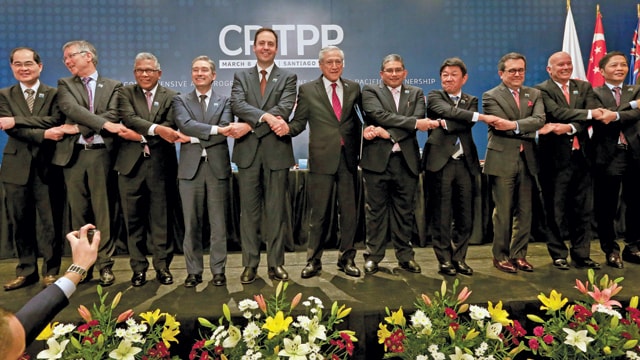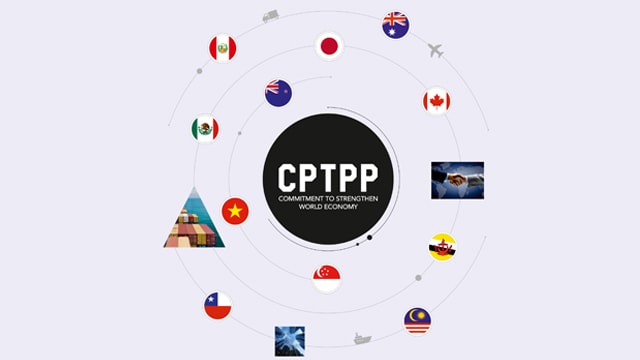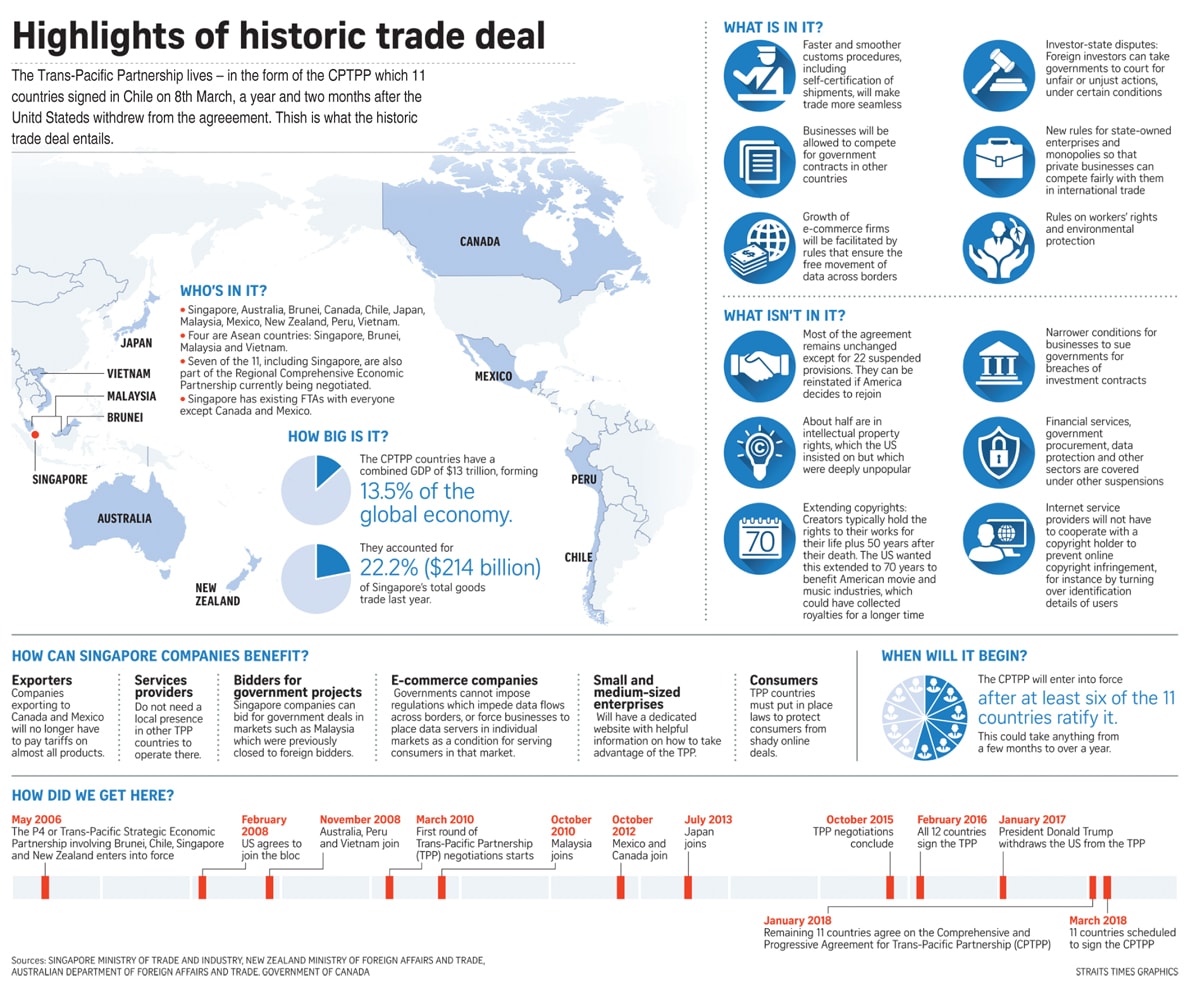Early last year, US President Donald Trump had unsettled the world economic order by pulling out the United States from Trans-Pacific Partnership (TPP). There was a speculation in the industry at that time, that the Vietnamese economy and apparel trade would be hugely impacted following US’ withdrawal.
Many believed that the textiles and apparel industry in Vietnam would have enjoyed large access, especially to the US market through reduced tariff duties had US been a part of TPP. But, that was not to happen. However, Vietnam came out of it unscathed. “Saying 2017 was good for Vietnam would be an understatement. I would say that the first quarter of 2017 was excellent,” averred Trinh Hoang Anh (Andy), Deputy General Director, Camle JSC. The world was moving without it and so was Vietnam – and it was moving quite well.
2018 seems to be yet again talking about TPP but this time without the United States of America. If it was TPP 12 then, it is CPTPP 11 now. The 11 nations, which are a part of Comprehensive and Progressive Agreement for Trans-Pacific Partnership (CPTPP), are Australia, Brunei, Canada, Chile, Japan, Malaysia, Mexico, New Zealand, Peru, Singapore and Vietnam.
These 11 nations – notably without the United States of America – finally signed a new agreement in Chile on 8th March. It was in November 2017 that these countries had decided to come together and sign the agreement, despite having some differences among themselves. “It is a landmark (deal) for the future of our country and the Asia-Pacific region,” averred Toshimitsu Motegi, TPP Minister, Japan while confirming on the above. In their pursuit to build a strong world economy, the nations have finally decided to move forward without the US.

Many other countries are showing interest in the CPTPP and it will now be important to explain the relevance of this agreement to USA. If US joins, it will be more interesting as currently the TPP accounts for 13 per cent of total global GDP, and with US, it will become 40 per cent. The US participation can only bolster the pact. Considering that Japan, Mexico and Canada are major US allies, it shouldn’t be too tough to bring the US back again.
Expectations of Vietnam from the ‘TPP without the US’
Vietnam apparel sector did well – and continues doing well – without TPP, but many do agree that it would have gained a lot had TPP happened. “If TPP is signed, many buyers will be getting big orders as the customers will start reaping the benefits of duty-free access. If it works out, it will be a big boost for companies like us in Vietnam,” reasoned Upul Pathirana, General Director – Head of Operations, Epic Designers Vietnam Ltd. Hong Kong based Epic Designers Vietnam Ltd. today has two manufacturing facilities in the Ho Chi Minh City of Vietnam which cater to the premium retailers and brands.
While Vietnam expected to get big benefits from TPP 12, it now hopes to get small benefits from CPTPP 11. Corroborating on the same thoughts, Do Duc Dinh from the World Economics and Politics Research Institute said, “CPTPP is indeed a positive step for Vietnam though it may not be as strong as TPP with US.”
CPTPP is also an indication that the member countries are striving to be liberalized trade areas without the US. While substantiating on how the economy of Vietnam will be impacted by CPTPP 11, Dr. Tran Toan Thang, Head, The National Center for Information and Forecasting, has provided data to show that Vietnam’s gains from CPTPP 11 will be less than what it would have been from TPP 12.
According to the market analysis, Vietnam GDP is expected to increase by 1.32 per cent now that the CPTPP trade deal is signed, whereas it would have been 6.7 per cent in the case of TPP 12. It is noteworthy that the export growth rate figures are 4 per cent and 15 per cent, respectively. The import rate will see a surge of 3.8 per cent in case of CPTPP 11 while TPP 12 would have seen an import increase of 10.5 per cent.

But then, CPTPP 11 also gives Vietnam a huge opportunity to expand its reach for exports. The country, after signing this deal, can venture into many unexplored countries such as Japan, Mexico and Canada. “Japan is already a big market for Vietnam and I think CPTPP will only enhance the business among the member countries,” said Kamal Mangwani, Vice General Director, Premco Global Vietnam Co. Ltd. Japan is keen to get the pact signed in March itself so that bills for TPP ratification can be submitted for the 150-day ordinary Diet session.
One of the main aims of CPTPP is to slash trade tariffs among member nations. However, it also aims to reduce the so-called non-tariff measures, which cause obstacles during trade.
What keeps USA away…
Donald Trump has always maintained that the multilateral pact would severely hurt job opportunities for Americans and he has therefore always preferred bilateral trade deals. His commitment to ‘America First’ is on the top of his Government’s agenda and ever since coming to power, the Government has focused on reconsidering America’s current trade agreements in addition to enhancing bilateral trade.
Trump’s displeasure at the increasingly integrated global economic system has been seen recently in the tough stand employed by USA with regard to China taking away most of the American jobs.
Substantiating further, Toni Croci, Director, Sylvang Supply Co. Ltd., averred that “Why would USA sign such a treaty and give incentives to countries like Vietnam who are three times more competitive than USA? Of course, if TPP had happened, it would have been much better, but then USA would never sign it.” Sylvang Supply is an official agent of Incomlend – a B2B lending website – that helps to provide financial assistance and is actually a link between businesses and private funders.
USA has also been consistently questioning years of efforts to minimize global trade barriers as they hurt American workers and lead to big trade deficits. It also means that US has to deal with every country on one-on-one basis, thereby rejecting the regional and global pacts that Trump’s predecessors pursued.
But will US realize its mistake? Rufus Yerxa, President, National Foreign Trade Council (NFTC), feels that there will be a time when the US Government will understand that dropping out of TPP was a strategic blemish. NFTC is a lobbying group that represents brand connoisseurs like Walmart. “If US sees that TPP is working between Vietnam and other countries, US may reconsider,” said Roshan D Souza, Technical Manager (Washing), Newtimes Vietnam, while supporting the views of the NFTC President. Recently Trump had revealed that he is open to discuss about US inclusion if only the deal provides larger benefits to the nation.
Another cause of worry for several industry experts has been the slow submission of US to China as a strong leader worldwide. Trump has been focusing a lot on ‘America First’ and if and when this ‘America First’ economic agenda reaches its logical end, then it will be ‘America Alone’ and it will take no time for China to replace USA at the top of the global order – a thought endorsed by Matt Bennet, Co-founder and Senior Vice President of the think tank Third Way and Gabe Horwitz, Vice President for Economic Policy of Third Way.
Challenges
While Canada has been calling to restrict foreign firms in its country to save its French-speaking culture, Vietnam has been continuously demanding an exemption from trade sanctions that can be imposed by other countries when the rights of workers are not protected.
It has been decided that the concern raised by Vietnam as well as those by some other countries will be sorted out only in the form of side letters. Though the agreement has been signed, the details mentioned in the side letter agreement are yet not made public.
One of the biggest challenges, however, will be for all the countries to ensure that they go forward together to build a stronger global economy.
Still one of the biggest trade agreements…
It is worth noting that CPTPP’s total combined gross domestic product (GDP) would be US $ 13.5 trillion or 13.4 per cent of global GDP. While this is significantly less than the TPP’s combined US $ 28 trillion and 36 per cent of global GDP, it will still be one of the biggest trade agreements in the world. “Despite the absence of US, the pact covers a wide market of nearly 500 million people,” averred Heraldo Munoz, Foreign Minister of Chile.
It is interesting to mention here that South America’s Mercosur totals US $ 3.5 trillion, the Association of Southeast Asian Nations Free Trade Area (AFTA) totals US $ 2.5 trillion and the Common Market for Eastern and Southern Africa (COMESA) totals US $ 655 billion — yet again ascertaining that CPTPP is one of the most significant trading pacts worldwide.
However, the CPTPP, though large when compared to other such agreements, is not big enough to rewrite the rules of global trade, as the original TPP would have been. Yet one cannot undermine its potentiality; it indeed is a big trade deal in one of the most economically diverse and dynamic regions of the world. It is noteworthy that the deal has attracted attention from nations such as South Korea, Indonesia, and even the United Kingdom. Thailand and Colombia are also expected to join the deal soon.
Finally, despite all the challenges and setbacks, CPTPP has happened – and happened without United States of America. When Trump pulled out of the TPP last January, the deal was widely considered as doomed. Yet now the deal is back and is less controversial for its signing members. Far from being dead, the CPTPP perhaps signals a new chapter in global trade, one without the United States.








